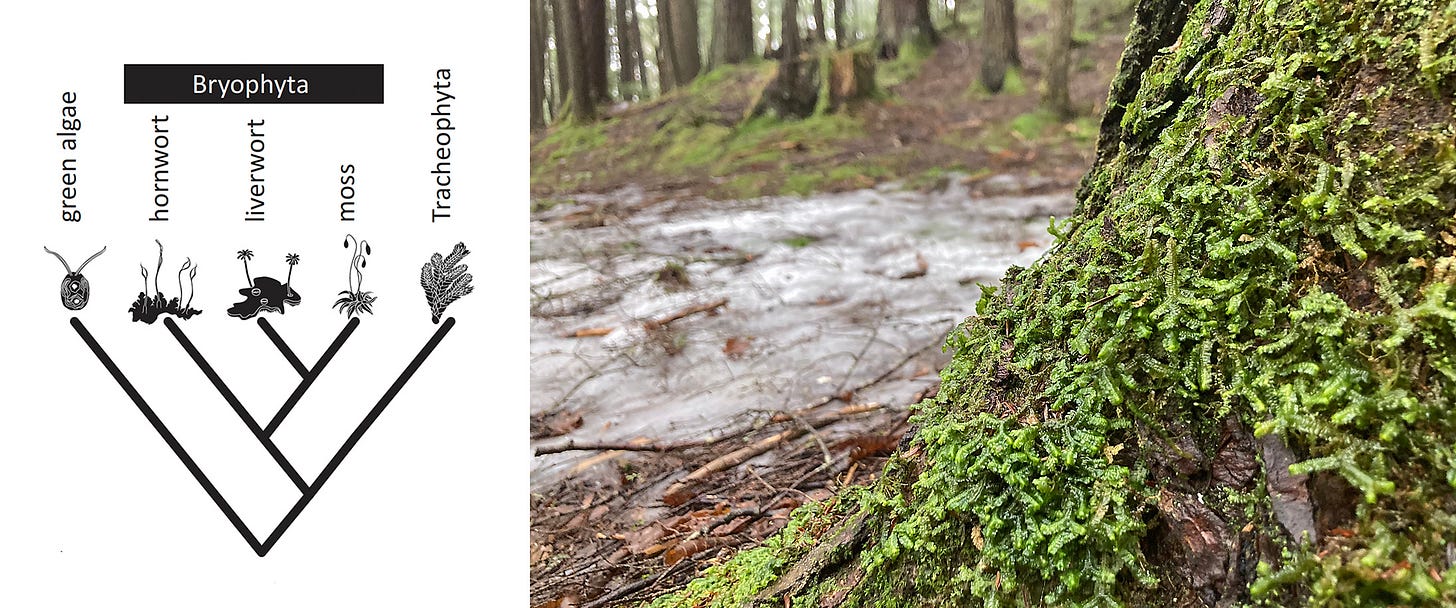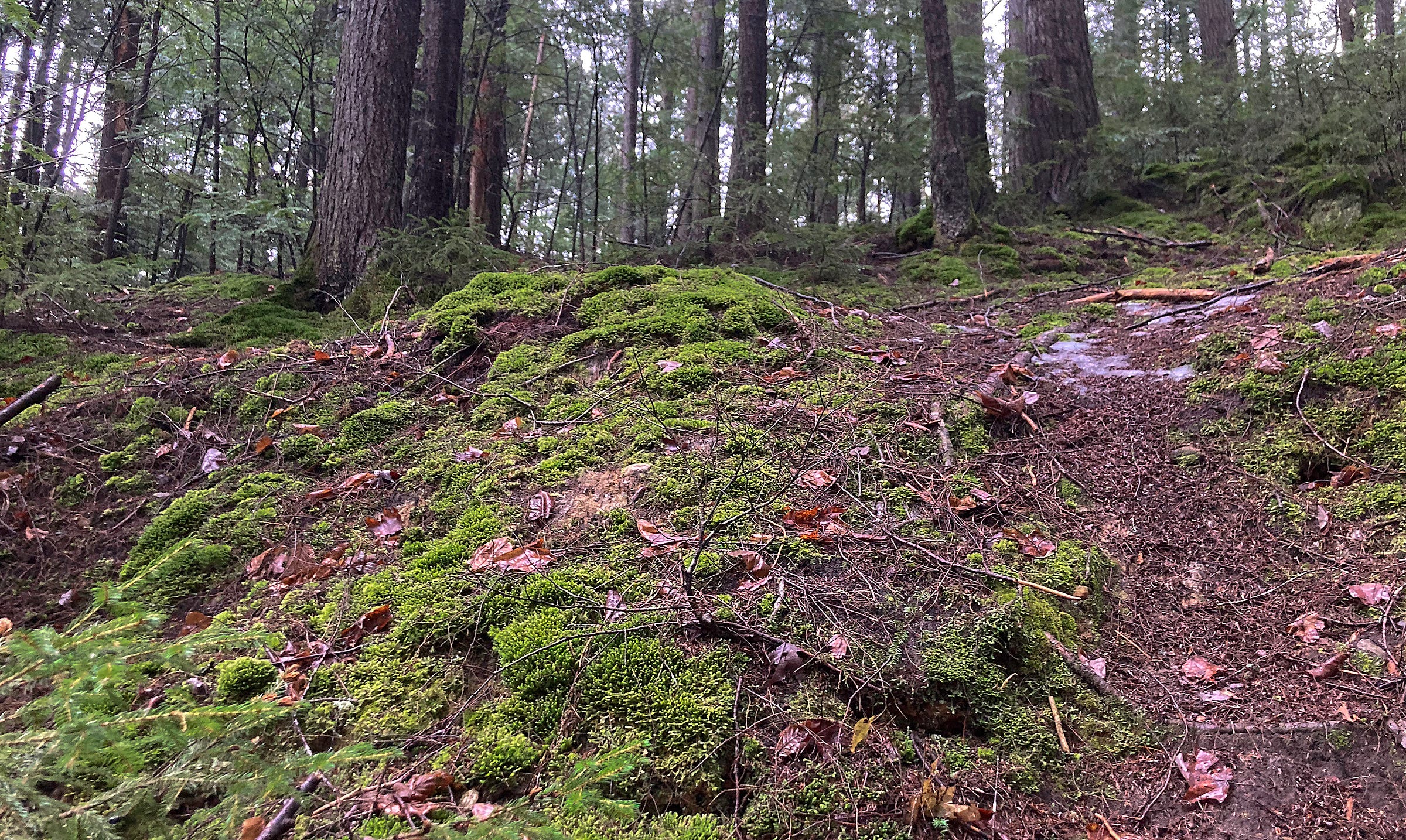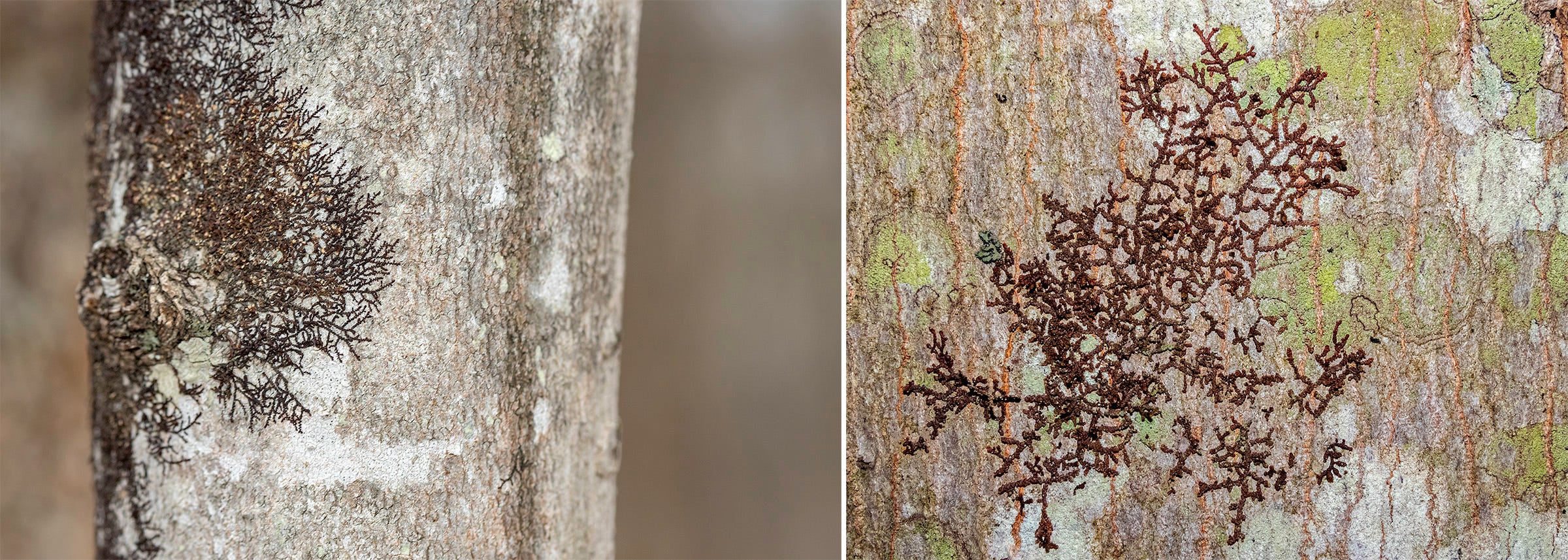IF ONLY REDEMPTION were as easy and inevitable as the passing of time. So instead of the ceremonial resolutions we make for ourselves today, maybe it’s enough for some of us to have merely survived another year on this wonderful and troubled earth.
Which has me thinking about extinction — of nature, of me, of us. And for perspective on life and death on this first day of 2024, I’ve naturally been turning my thoughts to liverworts.
Not that I would equate the breadth of human experience to a group of obscure plants with tiny leaves that can be shaped like liver. In their furtive ways, liverworts have never created anything as wonderful as antibiotics or peanut M&M’s. Lacking flowers and sensuality, they’ve never enjoyed sex, a Mary Oliver poem, or Beethoven’s Ninth Symphony (an annual performance of which I am attending here in Vermont today). (But see the postscript for lascivious liverwort photos.)
On one count, however, liverworts do have us beat: longevity. For any of us marking the new year, the only certainty is that we’ve moved one year closer to our personal extinction. For humanity itself, in the not-too-distant future, “naturally” or hastened by our own doing, or both, our species will certainly vanish forever. (Predictions of the exact or approximate date of our end time vary considerably).
Liverworts of course do not ponder extinction — they defy it.
We Homo sapiens have been around for upwards of 300,000 years, and that’s being charitable about our time on Earth so far. Were I to be even more charitable, our ape-like hominin ancestors go back at least 4 million years. Liverworts have been here nearly half a billion years — 125-times longer than our ancient ancestors and about 1,700-times longer than us. They’ve survived five mass extinctions featuring toxic gas, volcano eruptions, asteroid strikes, and other calamities that would have surely wiped out the likes of us — our bipedalism and big brains notwithstanding.
Moreover, you and I owe our very existence to liverworts and similar plants. A half billion years ago Earth was more like the moon: no grass, no trees, no green of any kind. No land animals to speak of either. But around that time liverworts, hornworts, and mosses, together a group of non-flowering plants called bryophytes, essentially evolved from aquatic algae to find their footing on rock and soil. (Also see the postscript for evolutionary caveats.)
Those lowly land plants began a remarkable transformation of the planet. Not only did they make the place green and pretty, more importantly, along with the algae, they sucked from the atmosphere mega-tons of carbon dioxide (yeah, the greenhouse gas) and generated oxygen. Without my going into details of the carbon cycle, ocean chemistry, and climatic patterns, the plants set the table for a big bang of terrestrial life: immeasurable biodiversity by means of evolution. It’s the reason that Substack is a home for writers and readers — and not for mats of slimy green aquatic plants.
But I know what you’re thinking. Okay, sure, those early plants gave me air to breathe, but what has a liverwort done for me lately? It does not write songs like Taylor Swift or Jimi Hendrix; it cannot bring peace to the Mideast; it never ponders the meaning of life or extinction.
Nope, that pondering is the stuff of human beings. Which brings me to my encounter with a liverwort species here in Vermont’s capital city of Montpelier in the final days of 2023. In a genus called Frullania, there is nothing particularly unusual about this liverwort (other than, you know, we owe our existence to its ancestors). More to the point, the Frullania has reminded me of the human capacity for ignorance and discovery.
Until only a week ago, I had never known of this liverwort, despite my walking past it growing on tree trunks thousands of times in a patch of forest behind my home. The more I looked, the more I found Frullania. It is one of the most common plants in those woods. In the past couple of days, my informal study of the tree species on which Frullania grows has morphed into a study of the few trees on which it does not grow. And until now I had never known it was there.
Let’s be real here. We’re not talking about wildflowers or warblers. Other than perhaps its branching growth pattern, this liverwort isn’t exactly charismatic. Then again, neither are many of us. And yet here we are, among the most interesting and destructive and magnificent things ever to have happened to this planet.
An asteroid strike might wipe us out for good, as one did the dinosaurs 66 million years ago. Perhaps we’ll self-destruct in a nuclear war. Or maybe a pandemic and climate upheaval will combine to hurl us careening ever faster toward our appointment with extinction. Whatever the case, when we’re gone one way or another the liverworts and lots of other things will get on just fine.
So until the extinction of our species, or at least until the extinction of me, I resolve in 2024 to do more to make the world just and peaceful and knowledgeable. It begins today in a forest out back. Even in a place I know well, where I find peace among wild things, a plant that I did not know one year ago reminds me that I still have much to learn.
To the readers of Chasing Nature, thanks for being here. I wish for you in the new year peace among wild things.
Postscript: Bonus Liverwort Biology
Perhaps the best way for a plant to get around is by way of spores. They’re durable and float — even over mountains and across oceans. When liverworts showed up on the scene a half-billion years ago, there were no insect pollinators to aid in reproduction. So those early plants basically used rain and wind instead. It’s a story I’ll reveal in more detail when it happens here in summer — my modest New Year’s resolution for 2024. But by way of an oversimplified teaser, using the common genus Marchantia, liverwort reproduction proceeds basically like this:
The leafy portion of the plant (thallus) sprouts ornate structures that produce either sperm or eggs. The egg-producing structures (archegoniophores) are a bit like miniature palm trees and the sperm-producing structures (antheridiophores) can resemble tiny parasols. (Images below.)
For sperm to reach an egg the scene must be wet and wild. Basically, the sperm (they have two flagella) swim through a film of water on the plant or get splashed by raindrops toward the archegoniophore and swim from there.
Fertilization produces a zygote and then an embryo that matures into a sporophyte (often resembling a lovely orb) that eventually opens to cast its spores to the winds. Where they land the spores germinate to give us the liverworts (and lots to learn). Below right is Grace Glynn’s image of the emerald-green sporophyte of Handsome Woollywort (Trichocolea tomentella).
By the way, liverworts can also reproduce asexually by spreading around their vegetative parts.

Finally, there are about 20,000 or more species of bryophyte in the world, including as many as 9,000 liverworts, which themselves include more than 300 species of Frullania. I don’t know for certain which Frullania species I have, but I suspect it is Frullania eboracensis (New York Scalewort).
Bonus Plant Evolution: The Rise of Terrestrial Plants
Of course liverworts aren’t the only reason we exist. They and countless other random evolutionary events are why we’re here. But land plants were indeed a big deal along the way.
For a long time paleobotanists suspected that liverworts (or something very much like them) were the earliest known terrestrial plants, from which most other plants arose, including the vascular plants we know and love, somewhere around 300,000 species in all — from oaks to orchids, ferns to firs. But newer research suggests that some other plant was ancestral not only to liverworts and their ally mosses and hornworts, but to vascular plants as well.
One possible tree of life (topology) below features a bryophyte monophyly, which means this group is basically alone with its common ancestor in its evolution (showing a liverwort-moss branch [clade] and a hornwort branch). That’s it; nothing else came from the bryophytes (except for lots and lots of evolving bryophytes). In this model, the vascular plants (Tracheophyta) owe their roots (so to speak) elsewhere, but not to bryophytes. Research continues, so there are variations on this proposed topology.

Next Week – Overdue Housekeeping
Updates to the GO WILD portal for paying subscribers
Mini-tributes to unheralded Substack writers
A report on charitable giving via Chasing Nature’s paying subscribers
References and Acknowledgments
The Interrelationships of Land Plants and the Nature of the Ancestral Embryophyte. Mark N. Puttick, Jennifer L. Morris, Tom A. Williams, Cymon J. Cox, Dianne Edwards, Paul Kenrick, Silvia Pressel, Charles H. Wellman, Harald Schneider, Davide Pisani, and Philip C.J. Donoghue. (2018) Current Biology 28, 733–745.
Plant Evolution: Phylogenetic Relationships between the Earliest Land Plants. Stefan A. Rensing. (2018) Current Biology 28, R208–R231.
Because I’m a wannabe botanist who knows little about liverworts, for this post I am grateful for the wisdom of Cathy Paris, Dave Barrington, Chris Schorn, Steven Daniel, and most of all Vermont State Botanist Grace Glynn.
Images from Han Weald and Dmitry Ivanov appear thanks to iNaturalist and Creative Commons (CC BY-NC).







This is a particularly nice post, Bryan. The Berry poem is a wonderful bonus. I need to pin that on my wall (or in my brain). It took me straight to a pond where, this summer, kayaking with Nick, we stopped paddling our kayaks to enjoy the peace -- and then had a loon family emerge on either side of us: papa 20 meter to our right, mama and youngster just 10 feet to our left. For the next few minutes they traded calls as we drifted along together. A moment of great beauty and peace smack in the middle of a horrible, horrible year.
Peace in your house, dear friend. Let’s get out sometime.
The perfect mix of science and awe!